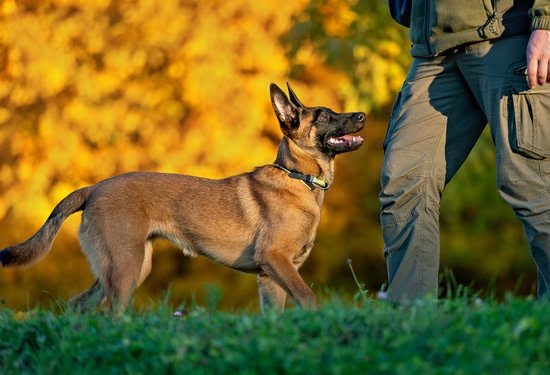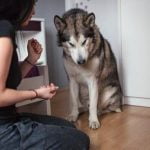Introduction
Training a dog that’s not motivated by food rewards can be a challenging and frustrating task. Even the most well-behaved pets, who are usually quite eager to please their owners, may seem to refuse rewards on occasion. However, with a little understanding of how puppies respond to various kinds of training methods, you can effectively train your pet despite its lack of enthusiasm for treats.
In order to successfully complete this type of training, it is important to understand why some dogs develop a preference for food rewards. Dogs rely on their sense of smell more than any other sense when it comes to identifying what they consider desirable or rewarding. This means that the scent and taste of food can become strongly associated with positive reinforcement during training sessions. Unfortunately, some dogs simply do not have an appetite for treats; if your pet lacks enthusiasm for food-related rewards, you must use other methods to capture its interest in training.
There are several approaches that you may take when attempting to train a dog that’s not motivated by food rewards. Training games such as fetch and hide seek can be utilized as alternatives; these activities provide interactive activities for both you and your pup which add an element of fun and excitement into the session. Additionally, toys, verbal praise or simple attention can all provide effective forms of positive reinforcement; these methods allow you to still reward your pup for good behavior without having it require or even expect treats or other food-based rewards. With patience and dedication, you will eventually find out what kinds of stimuli work best in motivating your particular dog and this will allow you to more effectively refine your training plan as time progresses..
Understanding Your Dog
When considering how to train a dog that isn’t food-motivated, it is important to understand what might be influencing his or her lack of enthusiasm for treats. Food allergies, digestive problems, readily available meals in the home, or an aversion to the specific type of treats you are using are all factors that can decrease a dog’s interest in rewards. Identifying if any of these issues may be present is key for helping to improve food motivation.
Once you have narrowed down potential causes for why your pup is not responding to food rewards, you can look at ways to increase their interest. If it appears that their distaste comes from the type of treat they are receiving, try mixing up the types of treats you give them- mixing higher value items like pieces of hot dog with more mundane options such as kibble; this will hopefully create more excitement around snack time! Additionally, look at ways that you can remain consistent but also make snack time different and unique – think outside the box and vary your presentation methods (hand feeding versus a hidden reward game). Another great way to entice your pup towards food motivated behaviors could be by providing special toys or exercise sessions just following snack time. Further encouragements like verbal praise and physical affection should also be implemented. Ultimately, finding out what works best for your pup will be dependant on taking careful stock of its individual personality and preferences.
Establishing Routines and Rewards
The most important step to training a dog that is not food motivated is to establish routines and rewards. Routines should be created that allow the dog to earn rewards for displaying desired behavior. For example, if your dog wants to go for a walk, teach him that following basic commands such as “sit” and “down” will allow him access. This will help strengthen the connection between obedience and rewards without involving food or treats. Additionally, take opportunities to reward good behavior with verbal praise, petting and playing with toys since it has been found that positive reinforcement works best on dogs who are not food motivated.
To further reinforce this routine, provide rewards of varying levels based on whether the dog displays small improvements or perfect execution of the command and action. If mistakes are made, do not be tempted to punish your pet as negative reinforcement may lead them to become frustrated or anxious due to feeling punished or embarrassed. Create a positive environment by expressing interest in what they’re doing rather than placing focus on lapses in their performance. Moreover, dedicate several minutes each day for commands practice and place emphasis on consistency in order to ensure reliable results from your pup over time.
Different Types of Rewards
There are plenty of other rewards that can be used to train a dog that isn’t food motivated. Depending on the type of task being trained, some common rewards may include toys and games, verbal praise with enthusiastic tones and patting, and walks or playtime outdoors. Toys may be better suited for teaching fetching games, for instance. Verbal praise works especially well when training obedience commands such as sit or stay. Praise should always be calm and consistent, with a higher pitch of voice and a bigger emphasis on certain words when announcing rewards. Some dogs also respond positively to physical contact like petting or scratching in their favorite spot; this is especially useful when trying to get them to associate certain touches with positive reinforcement, so they’re less apprehensive in situations like grooming or medical checkups. Walks are great rewards for retrieving or general off-leash activities; providing exercise helps establish trust between owner and dog and encourages good behavior throughout their time together. Interactive games like tug-of-war also make excellent rewards as they engage both dog and owner while providing an outlet for dogs’ natural need to hunt and explore. No matter what type of reward is chosen, making sure it’s something enjoyable for both pup and owner is key in order to make the activity fulfilling for each party involved in the training experience.
Choosing the Right Rewards
One of the most important aspects of successfully training a dog that is not food motivated is understanding what type of rewards will be most effective. Every dog is different and you may need to experiment with different rewards to find out which works best for your pup. When selecting rewards, consider things like petting, praise, playing with toys, walks, games and anything else your pup enjoys. For example, if your pup particularly loves playing with particular squeaky toy then it may be effective in reward training. Keeping the rewards varied and interesting can help maintain your pup’s motivation throughout the training process.
It’s also helpful to create specific cues for each reward such as clapping when introducing praise or rattling a treat bag when offering food as a reward. This helps teach your pup exactly what they are being rewarded for and gives them positive reinforcement for desired behaviors leading to better long-term results over time. Additionally, try to focus on rewarding desired behaviors immediately following performance so that your pup understands the connection between his behavior and the positive outcome. Finally, remember to be patient and consistent with any new training technique and view failure as an opportunity to learn rather than a sign that something isn’t working. With enough time and effort you are sure to get successful results!
Make Training Fun
Training a dog that is not food motivated can present an extra challenge because its important to capture their interest and keep them engaged in the task or behavior. To do this, its important to make training fun and rewarding by using positive reinforcement. Use creative rewards like a favorite toy, praise, or polite touch (such as petting). Chances are if it catches your dog’s attention and allows you to reinforce your desired behavior, then it will work. Encourage your pup to make the connection between the toy and completing commands correctly. Additionally, follow-up each successful command with ample praise; verbally expressing words of encouragement and offering physical affection goes a long way during training sessions! Incorporating short burst of multisensory experiences such as music, sounds or light can add variety and stimulation to encourage learning. You may even discover some unexpected dog motivation! Ultimately, by incorporating positive reinforcement you can build a stronger bond with your pup – one based on trust, support and realizing together the joys of puppy training.
Letting Your Dog Lead
One effective way to train a dog that isn’t food motivated is to let your dog lead in the decision-making. This means allowing them to choose the rewards they’d prefer, and using positive reinforcement techniques such as ‘Yes’, ‘Good’ and other kinds of verbal praise rather than relying solely on treats. Encourage your dog to participate in training by providing opportunities for them to interact with their environment. This could include simply observing around the house or yard, playing games like fetch or hide and seek, or learning basic commands through interacting with objects such as toys. When you are working on obedience training such as sitting; encourage your pup by petting them and speaking positively when they show signs of good behaviour. During each session reward your pooch for performing the desired behaviours; these rewards can consist of both edible treats as well as interaction from you like belly rubs and games. This type of reward system will help provide an incentive for future obedience; once your pup has successfully done what is asked it will be more likely to perform those same tasks again in order to receive the same reward. Additionally, create an atmosphere so that your pup learns it’s ok to make mistakes instead of punishing them harshly. The overall aim here is build a bond between you two while also giving them autonomy in how they would like training to go!
Remain Consistent
It’s important to remain consistent when training a dog that isn’t food motivated. Start by creating positive associations with praise and attention to reward your pup every time they perform the behavior you desire. Offer them verbal recognition, patting, and/or physical affection such as ear scratches or rubbing their chin. Whenever possible, make sure to provide positive reinforcement immediately after they complete the behavior to help them understand what it was that earned that reward.
Additionally, try introducing different types of rewards like playtime, new toys, or trips to the park as a form of reward providing another incentive for your pup to learn. Make sure also to use clear commands and commands only once per instance of desired behavior since repetition can cause confusion if you consistently give incorrect information. Finally, stay patient and remember it may take some dogs longer than others depending on the command you’re trying to instill so be prepared for deviations from your plan if needed.
Knowing When to Stop
Working with a dog that’s not food motivated can be frustrating, but it is also possible to have a successful training session without the use of treats. Rewarding your dog’s good behavior with praise and verbal cues is often enough to encourage them to do what you want. It’s important to remember that dogs learn best in short spurts and can become bored or lose focus if they are expected to perform too long or if the task is too repetitive or boring. It’s key to keep sessions short – 10 minutes or less is ideal – and always end on a positive note. When you notice your pup tiring or becoming distracted, it may be time for a break or end the session so that both you and your pup stay happy, energized, and eager to continue training.
Finishing Touches
When teaching your dog commands and tricks, you may have gotten to a point where you wonder how to keep your pet engaged with the training process without using food rewards. After all, not all dogs are motivated by treats. If you’ve been relying on tasty morsels for reinforcement, it’s totally possible to switch over to a more creative tactic if food isn’t doing the trick.
Here are some alternatives to consider:
1. Use Playtime as a Reward – Dogs love playtime and physical activity, so make the most of it by turning reactions like fetch or rolling around into compliments and rewards for good behavior. After every successful trick he performs, use upbeat words rather than a treat and offer him an exciting game instead!
2. Include Praise As Part Of The Training Process – Instead of being only concerned with handing treats out after every command has been carried out correctly, reward him with verbal approval or petting during the learning process too. That way good behavior will be reinforced from initiation to completion!
3. Choose Toys That Provide Challenges – Get your pup interested in toys that keep him physically and mentally engaged long after the session is complete! For example, stuffable toys that require working out how to get at the treat inside provide hours of amusement as well as helping tire him out nicely. Plus he will associate these toys with having fun and likely be much more receptive to new commands next time around!

Welcome to the blog! I am a professional dog trainer and have been working with dogs for many years. In this blog, I will be discussing various topics related to dog training, including tips, tricks, and advice. I hope you find this information helpful and informative. Thanks for reading!





